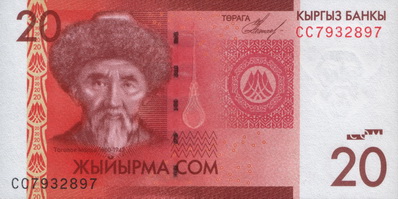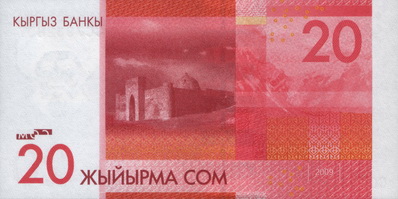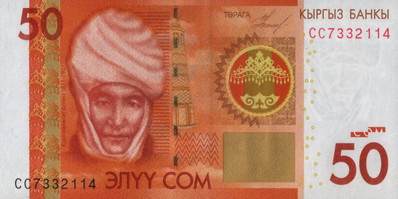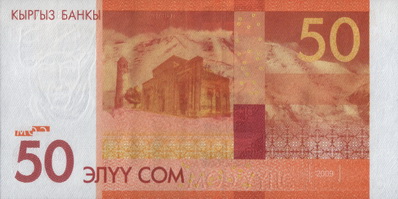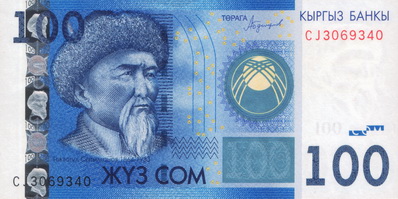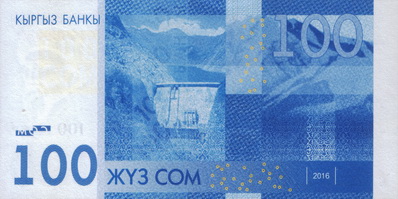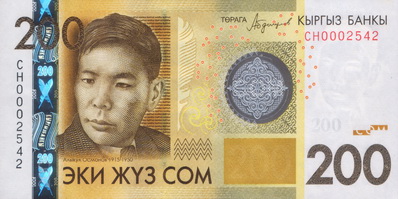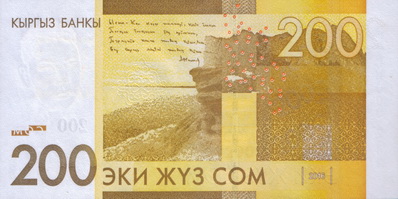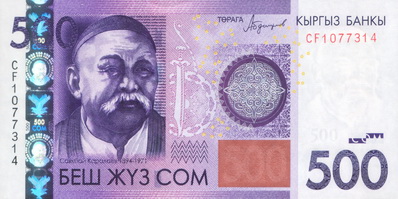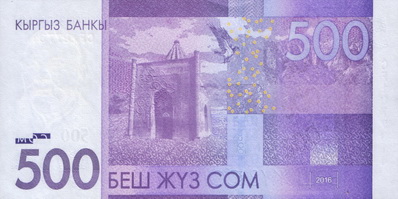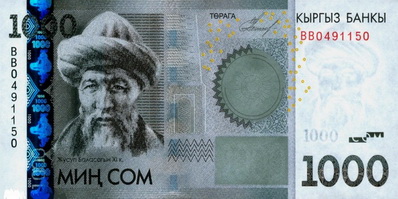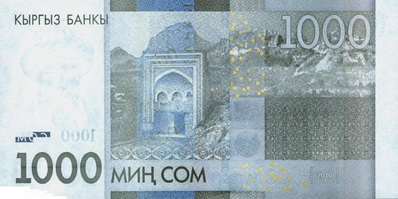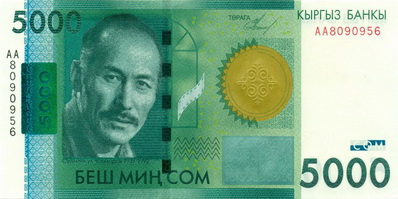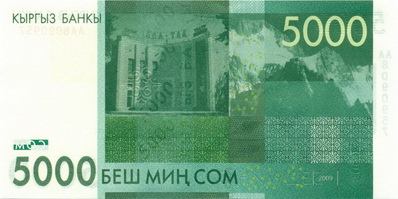The som is the national currency of Kyrgyzstan, and has the international code of KGS. The decision to create a national currency was approved by Parliament on May 10, 1993, and the first som were released into circulation by the Bank of Kyrgyzstan in summer of 1993. Kyrgyzstan was the first CIS country besides Russia to release its own currency.
Currently, there are banknotes in circulation in denominations of 20, 50, 100, 200, 500, 1000, and 5000 soms, with coins in denominations of 1, 3, 5, and 10 soms. The som can be subdivided into 100 tyiyn, though tyiyn are almost never used. Occasionally, a 50 tyiyn coin can be found floating in circulation, but generally, 1 som is the smallest unit.
The 20 som bill features Togolok Moldo, a famous musician, and Tash Rabat, a 15th century caravanserai in Naryn. The 50 som bill has Kurmanjan Datka, a female leader in the Khanate of Kokand, and the minaret and mausoleum in Uzgen. The 100 som bill shows Toktogul Satylganov, another musician, and the Toktogul Hydroelectric Power Station, named in his honor. The 200 som bill features Alykul Osmonov, one of the great poets of the the 20th century, and a panorama of Lake Issyk-Kul. The 500 som bill shows Sayakbay Karalaev, a manaschi, and the Manas Mausoleum in Talas. Yusuf Balasagun, on the 1000 som note, was a famous poet from the Karakhanid Empire, and shares space with Sulayman Too, the UNESCO World Heritage Site in Osh. On the largest bill, 5000 som, is Suimenkul Chokmorov, a film actor, and Ala-Too Square, in Bishkek.
Banks and exchange offices will be able to change most currencies, though travelers should make sure to bring new and crisp bills. Banks are open business hours (9:00 or 9:30 until 17:00 or 17:30, Monday through Friday), but exchange offices may be open all hours and all days. The area of the intersection of Moskovskaya and Sovetskaya Streets (Mossoviet) is the busiest currency exchange district in Bishkek, where travelers can certainly find good rates at any hour. Outside of Bishkek, ATMs and exchange offices are more scarce, but can still be found. If traveling out to more remote regions, visitors should make sure to take enough cash with them. Payment for larger sums, such as for hotels, treks, or tours, often takes place in Euros or US Dollars, rather than in som.



